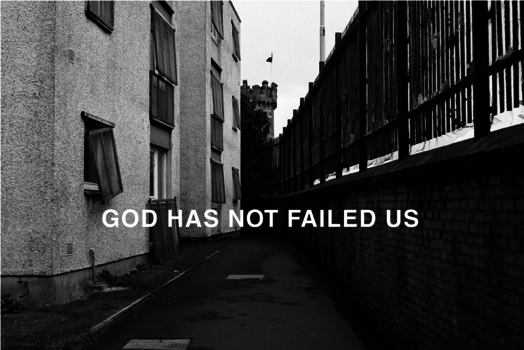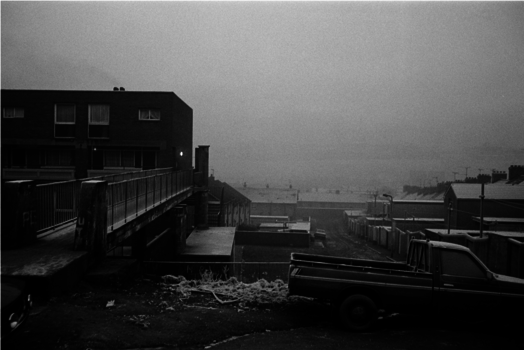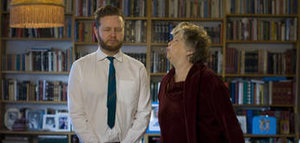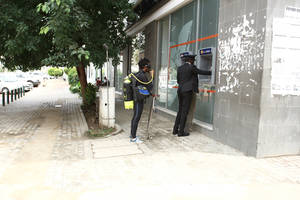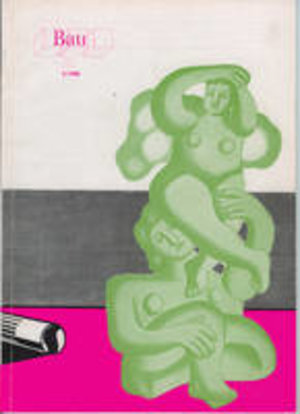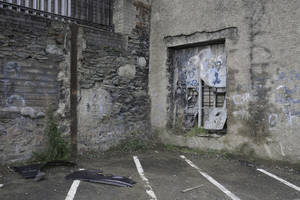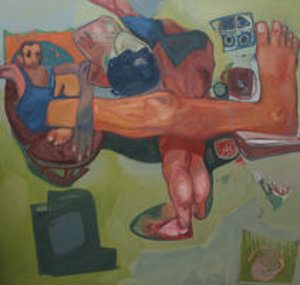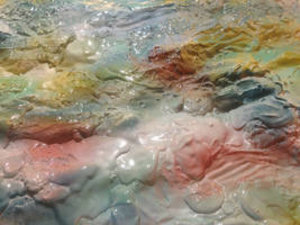December 18, 2016 – February 26, 2017
Thicker than water. Family concepts in contemporary art
Opening: Sunday, December 18, 11 am
In view of changing realities family has to be thought in a new way. At the latest with the protests of 1968 criticism of rigid role models and patriarchal power is part of the social mainstream. Yet as soon as it comes to defining what family is the topic develops a new explosive force. What makes up the families core/the core of the family?Besides value and generational conflicts social debates about family are coined by the development of new technologies like IVF or surrogacy as well as alternative lifestyles/outlines of life. Instead of a biological legitimacy family can also be perceived as a production process or doing family. Therefore the development of communities und society interact and lead to the question if the notion/concept/idea of family can be interpreted individually and filled with all forms of living together. Thus family affairs do not only have a private, but also a politically dimension. They are expression of changing social structures and different family conceptions.
Personally involved or at a distance the artists reflect the present status of family. Which meaning does family have in view of globalized working conditions and pluralized ways of life? In what way do networks and friends replace classical family structures?
Familia, the Latin origin of the word family, soberly translates to household. Instead of blood relationship and community of fate the term rather suggests a community based on voluntary commitment and with that captures the plurality of current family designs/concepts. Is family only a cause of free choice nowadays and no longer of genetic chance?
The exhibition presents works by Candice Breitz, Omer Fast, Simon Fujiwara, Badr el Hammami & Fadma Kaddouri, Nan Goldin, Verena Jaekel, Haejun Jo, Nina Katchadourian, Byung Chul Kim, Ragnar Kjartansson, Neozoon, Johannes Paul Raether, Gillian Wearing and Tobias Yves Zintel.
25 May – 21 August 2016
GOOD SPACE
Political, Aesthetic and Urban Spaces
Opening: Wednesday, 25 May, 7 pm
Please visit our project-webspace: goodspace.villa-merkel.de
With an exhibition entitled GOOD SPACE - Political, Aesthetic and Urban Spacespresented in the Villa Merkel, the Bahnwärterhaus, and the Merkel Park, the Galerien der Stadt Esslingen is investigating various aspects of public spaces, including ones that are actually constructed, set up in digital networks, or rendered concrete as the results of research. The exhibition takes up perspectives of contemporary art, architecture, and science. The focus is on unused potentials, on opportunities and new paths in accordance with the motto: “Let us give the future a home in public spaces!”
GOOD SPACEilluminates such current issues as how, in view of limited resources, the future can be shaped and social life can be successful. The architecture of informational structures is examined as well as questions of surveillance and invisibility in digital space. There is a vivid presentation of how the study of the evolutionary processes of plants can give rise to future-relevant methods in the areas of bio-design or urban ecology....
Personally involved or at a distance the artists reflect the present status of family. Which meaning does family have in view of globalized working conditions and pluralized ways of life? In what way do networks and friends replace classical family structures?
Familia, the Latin origin of the word family, soberly translates to household. Instead of blood relationship and community of fate the term rather suggests a community based on voluntary commitment and with that captures the plurality of current family designs/concepts. Is family only a cause of free choice nowadays and no longer of genetic chance?
The exhibition presents works by Candice Breitz, Omer Fast, Simon Fujiwara, Badr el Hammami & Fadma Kaddouri, Nan Goldin, Verena Jaekel, Haejun Jo, Nina Katchadourian, Byung Chul Kim, Ragnar Kjartansson, Neozoon, Johannes Paul Raether, Gillian Wearing and Tobias Yves Zintel.
This is a cooperative project with the Kunstpalais Erlangen, where the exhibition is shown from September 24 until November 27, 2016
25 May – 21 August 2016
ICA - EVERYTHING IS ARCHITECTURE: Bau Magazine from the 60s and 70
Opening: Wednesday, 25 May, 7 pm
EVERYTHING IS ARCHITECTURE: Bau Magazine from the 60s and 70swas initially curated for the ICA, London, by Juliette Desorgues. As a cabinet-display the show has now a guest appearance at the Villa Merkel in Esslingen.
This display focuses on the Austrian architectural magazine Bau: Zeitschrift für Architektur und Städtebau (Bau: Magazine for Architecture and Urban Planning). Originally named Der Bau, the magazine was published by the Central Association of Austrian Architects and established in 1925 as a trade publication.
The magazine also showcased the radical work of a younger generation of Austrian architects such as COOP HIMMELB(L)AU and Haus-Rucker-Co, and helped to provide a window to the major international, architectural and artistic scenes of the time, publishing the work of London-based architectural group Archigram and American architects and artists Buckminster Fuller and Claes Oldenburg.
https://www.ica.org.uk/whats-on/everything-architecture-bau-magazine-60s-and-70s
Zu den Seiten des ICA klicken Sie hier!
Personally involved or at a distance the artists reflect the present status of family. Which meaning does family have in view of globalized working conditions and pluralized ways of life? In what way do networks and friends replace classical family structures?
Familia, the Latin origin of the word family, soberly translates to household. Instead of blood relationship and community of fate the term rather suggests a community based on voluntary commitment and with that captures the plurality of current family designs/concepts. Is family only a cause of free choice nowadays and no longer of genetic chance?
The exhibition presents works by Candice Breitz, Omer Fast, Simon Fujiwara, Badr el Hammami & Fadma Kaddouri, Nan Goldin, Verena Jaekel, Haejun Jo, Nina Katchadourian, Byung Chul Kim, Ragnar Kjartansson, Neozoon, Johannes Paul Raether, Gillian Wearing and Tobias Yves Zintel.
This is a cooperative project with the Kunstpalais Erlangen, where the exhibition is shown from September 24 until November 27, 2016
6 March – 17 April 2016
Bahnwärterhaus:
MOVEMENT EYE HEAD HAND 2016
Mathieu Bessey, Peter Chevalier, Tobias Diehm, Fabian Fobbe, Markus Heller, Adam Henry, Steffen Kugel, Sascha Patzig, Lars Rasmussen, Christian Rothmaler and Sarah Verbeek
Opening: Sunday, 6 March, 11:00 am
In this group exhibition, eleven international artists present new positions of contemporary painting. The various stylistic approaches of the artists are linked by a belief in the infinite creative diversity of the medium of painting and the ensuing, fresh motivation for formal possibilities. The artists’ aptitude for the free play of fantasy joins up with a deep understanding of composition, colour and form. In spite of the formal differences, a common, ironical-mystical spiritual elixir is distilled out of the works on display and constitutes the homogeneous modelling clay out of which the exhibition is formed.
An intensive examination of the individual pictures quickly breaks through the surface of the fleet-footed irony and brings to the fore an unswerving artistic power that knows exactly which painterly means it must utilise in order to give rise to energetic pictorial force-fields. These pictures can be understood as clever, crafty experiential sponges, soaked full of art-historical playfulness and acts of homage. The common attitude of these artists is directed towards the goal of further expanding the borders of painting without denying its core. A self-confident affirmation of this venerable medium in the year 2016.
Curators: Sascha Patzig, Tobias Diehm
14 February - 24 April 2016
Willie Doherty
Home
Opening: Sunday, 14 February, 11 am
In addition to a selection of recent video works "The Amnesiac" (2014), "Remains" (2013) and "Buried" (2009) the exhibition will present a new video work, which will be on view at Villa Merkel for the first time. The exhibition will also include a number of new photographic works and a selection of works from the recent past.
These latest works will continue Doherty’s meditations, in video and photography, on the changing political landscape of Northern Ireland. Doherty examines the borders between the present and the past and between reality and memory. Doherty’s use of the camera reveals his interest for surveillance technologies on the one hand and his concern with the tradition of romantic landscape on the other.
Our Attention shifts from day to night and from urban areas to natural sites, from panorama to close-up. The camera seems to wander from the familiar path and to lead us into blind alleys or dead spaces.
Between the opposing poles of authenticity and fiction, his videos explore the possibilities and conditions of the filmic apparatus, drawing on genres as action film, auteur film, and documentary. In a visual sense he also uses a technique which is comparable to a criminal novel: He increases the indistinguishability between a concrete threat and a mental state, the fear of nothing, the fear of the indefinite. Narrative structures and possibilities of interpretation remain unsettled. Willie Doherty‘s photographs and videos force us to deal with the fact that we can no longer trust the image.
We would like to thank Alexander and Bonin, New York, Galerie Peter Kilchmann, Zürich, Galería Moisés Pérez de Albéniz, Madrid and Kerlin Gallery, Dublin for their generous support.
23 January 2016 – 28 February 2016
Bahnwärterhaus:
Under Construction II
Opening: Friday, 22 January, 7:00 pm
Dave Bopp, Tilman Brandmeier, Benjamin Gräbner, Timo Sacher, Hanna Schwaderer, Martin Schweikert, Min-Seob Ji, Nigatu Tsehay Molla, Daniela Wolf
‘Under Construction’ is a two-part exhibition series which uses the Bahnwärterhaus as a platform for young, international artists. The title stands for an unfinished process. The works are open constructions which are capable of being continued further. Nine positions are being presented. In this part, there is a special focus on current tendencies of painting. With Dave Bopp, Timo Sacher, Nigatu Tsehay Molla and Martin Schweikert, four painterly positions are represented in the exhibition. Digitalised elements, filmic references or graffiti techniques flow into their painting as a matter of course. For example, the paintings of the Swiss artist David Bopp are arranged in layers which comment upon, paraphrase and write each other further. The small, organic, abstract forms enter into mutual relationship. The computer-generated forms are applied in multiple layers and with diverse techniques onto the pictorial carrier. This “sample technique” opens up diverse references on several levels: for example, with regard to remixing techniques in the field of music. With his relief-like pictorial carriers made of plaster, on the other hand, Timo Sacher realises a spatial experience of colour by using spray paint. The figural painting of Nigatu Tsehay Molla is influenced by film, among other things. In contrast to film, however, it is not a matter of clear camera perspectives. The figures are distorted in a collision of varying vantage points.
With a mischievous wink of the eye, the works of Hanna Schwaderer and Tilman Brandmeier allude to the title of the exhibition, ‘Under Construction’. For the duration of the exhibition, Tilman Brandmeier delegated the bothersome task of hanging pictures to a kinetic construct. But the task is never completed. Hanna Schwaderer packs the process of producing a picture into a transport crate.
Further contributions come from Ben Gräbner, who investigates the effects of various materials in his sculptural works, and from Daniela Wolf, who presents a video.
In a performance by Min-Seob Ji on the evening of the exhibition opening, towers made of origami-boats arise under the title ‘Miraculous Construct’. The fragile construction created by the South Korean artist is a tribute to the legendary performance ‘In Search of the Miraculous’ by the artist Jan Bas Ader from 1975. The artist disappeared without a trace while attempting a performative crossing of the Atlantic in a tiny sailboat. In view of the current movements of refugees across the ocean, this historical performance acquires a new facet.
Curator: Anka Wenzel


